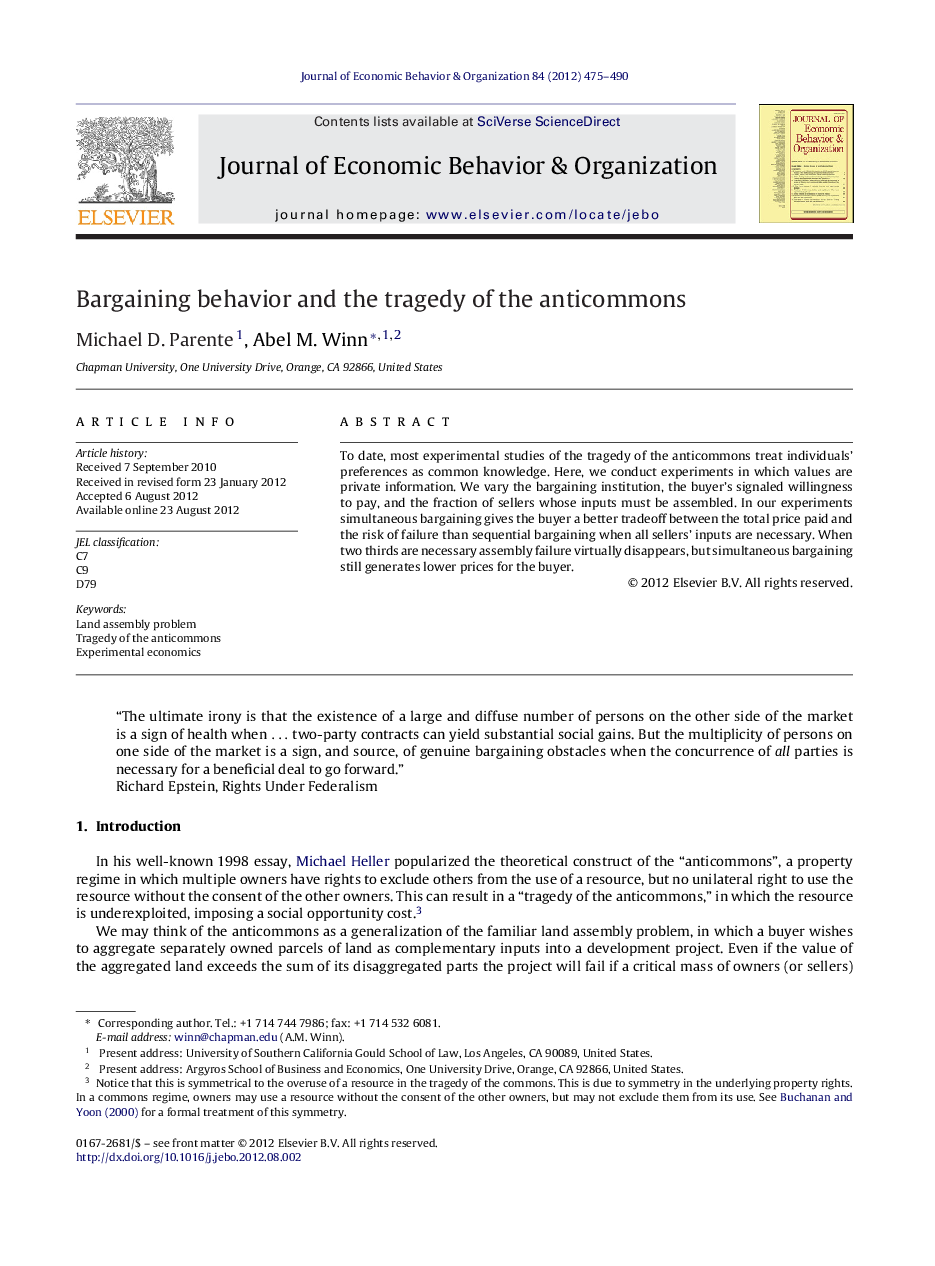| کد مقاله | کد نشریه | سال انتشار | مقاله انگلیسی | نسخه تمام متن |
|---|---|---|---|---|
| 883721 | 912347 | 2012 | 16 صفحه PDF | دانلود رایگان |

To date, most experimental studies of the tragedy of the anticommons treat individuals’ preferences as common knowledge. Here, we conduct experiments in which values are private information. We vary the bargaining institution, the buyer's signaled willingness to pay, and the fraction of sellers whose inputs must be assembled. In our experiments simultaneous bargaining gives the buyer a better tradeoff between the total price paid and the risk of failure than sequential bargaining when all sellers’ inputs are necessary. When two thirds are necessary assembly failure virtually disappears, but simultaneous bargaining still generates lower prices for the buyer.
This graph depicts the percent of subjects who chose the “soft bargaining” price when they saw a low, uncertain, or high signal of the buyer's willingness to pay. The budget signals had a clear effect on bargaining behavior, although theoretically they should not.Figure optionsDownload as PowerPoint slideHighlights
► We experimentally study the tragedy of the anticommons with private values.
► We elicit seller demands under simultaneous vs. sequential bargaining, strict vs. partial input complementarity and low vs. uncertain vs. high signals of the buyer's willingness to pay (WTP).
► Simultaneous bargaining almost always results in lower demands than sequential bargaining.
► Sequential bargaining rarely results in a lower probability of assembling inputs.
► Signals of WTP affect demands even when they should not in theory.
Journal: Journal of Economic Behavior & Organization - Volume 84, Issue 2, November 2012, Pages 475–490